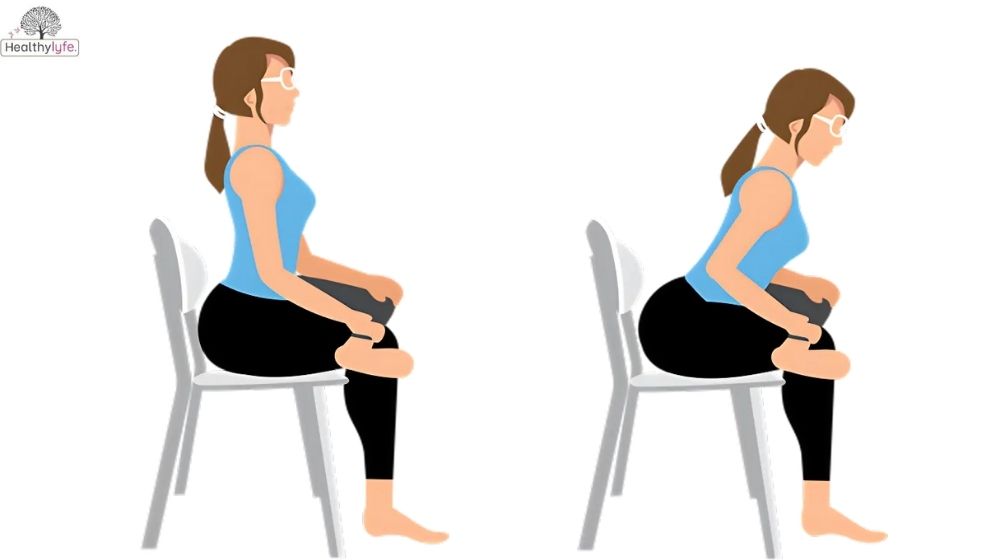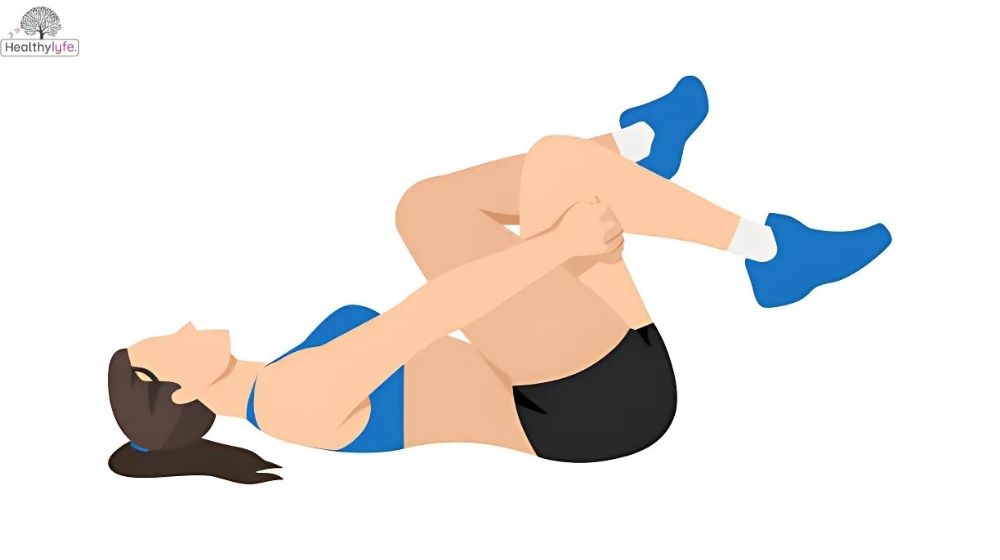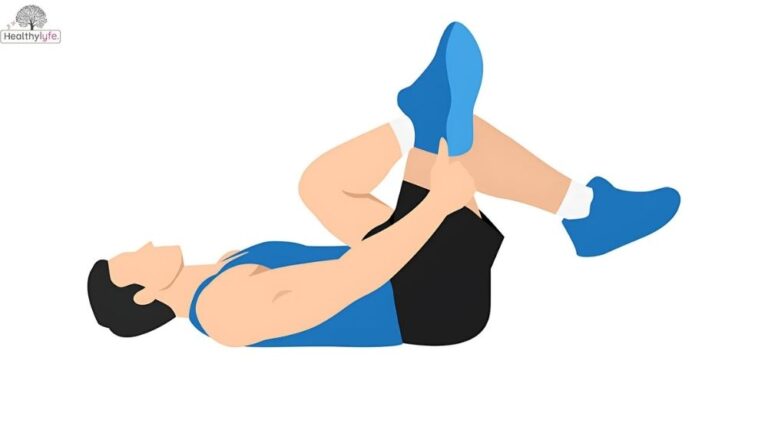Relieve lower back pain with simple piriformis stretches. Reduce tension and improve flexibility for better comfort.
Introduction
Lower back pain is a common problem that can make everyday activities difficult. One surprising cause of this pain is the piriformis muscle, located deep in the buttocks. When this muscle becomes tight or irritated, it can press on the sciatic nerve, causing discomfort in the lower back, hips, and legs.
The good news? Stretching the piriformis can help relieve tension, ease pain, and improve flexibility. In this guide, we’ll cover the best piriformis stretches to help you reduce lower back pain and feel better fast.
What is Piriformis Stretches?
Piriformis stretches are targeted exercises designed to stretch and relax the piriformis muscle, a small but important muscle located deep in the buttocks. This muscle connects your lower spine to the top of your thigh bone and plays a key role in hip rotation, stability, and movement.
When the piriformis muscle becomes tight or inflamed, it can irritate the nearby sciatic nerve, leading to pain in the lower back, hips, and legs—a condition often called piriformis syndrome.
By doing specific piriformis stretches, you can:
- Relieve muscle tension.
- Reduce sciatic nerve irritation.
- Improve flexibility and mobility in your hips and lower body.
- Alleviate lower back pain.
How to Do Piriformis Stretches Exercise

Seated Piriformis Stretch
- Steps:
- Sit on a sturdy chair with both feet flat on the floor.
- Cross your right ankle over your left knee to form a figure-four shape.
- Gently press down on your right knee with your hand while keeping your back straight.
- Lean forward slightly until you feel a stretch in your right hip and buttock.
- Hold the position for 20-30 seconds, then switch sides.
Supine Piriformis Stretch (Reclined Figure-Four Stretch)
- Steps:
- Lie flat on your back with your knees bent and feet flat on the floor.
- Cross your right ankle over your left thigh.
- Reach behind your left thigh with both hands and gently pull it toward your chest.
- Keep your head and shoulders relaxed on the ground.
- Hold the stretch for 20-30 seconds and repeat on the other side.
Standing Piriformis Stretch
- Steps:
- Stand with your feet hip-width apart near a sturdy surface for balance.
- Cross your right ankle over your left thigh, forming a figure-four shape.
- Slowly bend your left knee as if sitting into a squat, keeping your back straight.
- Lower yourself until you feel a stretch in your right hip and buttock.
- Hold for 20-30 seconds, then switch legs.
Kneeling Piriformis Stretch (Pigeon Pose)
- Steps:
- Begin in a tabletop position (on hands and knees).
- Bring your right knee forward and place it behind your right wrist, angling your shin slightly across your body.
- Extend your left leg straight back, keeping your hips squared.
- Lower your torso toward the floor, resting on your forearms or extending your arms out fully.
- Hold for 20-30 seconds, then repeat on the other side.
Benefits of Piriformis Stretch Exercise [1]
Piriformis stretching exercises focus on relieving tightness and tension in the piriformis muscle, located in the buttock region. This muscle plays an important role in stabilizing the hip and aiding in the rotation of the thigh. When the piriformis becomes tight or irritated, it can lead to discomfort and conditions like piriformis syndrome, which may cause radiating pain along the sciatic nerve. Stretching the piriformis regularly can help alleviate this discomfort, improve mobility, and enhance overall well-being.
Relieves Sciatic Nerve Compression
One of the primary benefits of piriformis stretching is the relief it can provide from sciatic nerve compression. When the piriformis muscle tightens, it may compress the sciatic nerve, leading to pain, numbness, and tingling sensations that can radiate down the leg (known as sciatica). By stretching the piriformis, you help release pressure from the nerve and reduce associated discomfort.
Reduces Lower Back Pain
Tightness in the piriformis can also contribute to lower back pain. Since the piriformis is closely linked to the spine and pelvis, its tightness can lead to misalignment and muscle imbalance, causing discomfort in the lower back region. Stretching the piriformis can restore balance and alignment, alleviating pain and stiffness.
Improves Hip Flexibility and Range of Motion
Regularly stretching the piriformis increases flexibility in the hip area, promoting a better range of motion. This is especially beneficial for athletes or individuals who perform activities involving hip rotation, such as running, dancing, and cycling. Improved hip flexibility also enhances overall mobility and makes day-to-day movements more comfortable.
Prevents and Relieves Muscle Tension
The piriformis muscle can become tense due to prolonged sitting, poor posture, or overuse. Stretching helps release accumulated muscle tension, which can prevent the development of chronic pain or discomfort. Regular stretching of the piriformis ensures that the muscles remain relaxed and supple.
Enhances Posture and Body Alignment
By stretching and releasing tightness in the piriformis, you can improve your posture. Tightness in this muscle can pull the pelvis out of alignment, leading to a misalignment of the spine and hips. Stretching helps to counteract this tension, promoting better posture and reducing the risk of discomfort in the back, hips, and legs.
Supports Active Recovery
For athletes or active individuals, piriformis stretches aid in recovery after intense workouts or physical activities. Stretching the muscle reduces soreness, enhances muscle relaxation, and helps to prevent injuries by maintaining muscle elasticity and flexibility.
Improves Circulation
Stretching exercises increase blood flow to the muscles and surrounding tissues, promoting better circulation throughout the body. This increased circulation helps in the healing process, reduces inflammation, and supports the delivery of nutrients to the muscles, speeding up recovery and reducing muscle fatigue.
Promotes Overall Comfort and Well-Being
Regular stretching can lead to an overall sense of physical comfort and relaxation. Stretching the piriformis promotes muscle relaxation, reduces stress, and can contribute to a feeling of well-being. It’s a simple yet effective way to enhance both physical and mental health.
Tips for Lower Back Pain Relief
Lower back pain is a common issue that can be caused by various factors, including tight muscles, poor posture, muscle imbalances, and tension in the piriformis muscle. The piriformis is closely related to the lower back and can cause pain in this area when it is tight or inflamed. By incorporating piriformis stretches into your routine, you can help relieve lower back pain and improve flexibility, alignment, and muscle balance. Here are some tips to maximize the effectiveness of piriformis stretches for lower back pain relief.

Warm Up Before Stretching
- Why it’s important: Stretching cold muscles can increase the risk of injury. A proper warm-up prepares the muscles for stretching by increasing blood flow and flexibility.
- How to do it: Perform gentle activities such as walking, light jogging, or dynamic stretches (e.g., leg swings) for 5-10 minutes before doing piriformis stretches.
Use Gentle, Controlled Movements
- Why it’s important: Stretching should never be painful. For lower back relief, gentle and controlled movements allow the muscles to release tension without causing strain.
- How to do it: Move slowly and avoid bouncing during the stretch. Hold the stretch for 20-30 seconds and gradually deepen the stretch as you feel more comfortable. Never force a stretch.
Focus on Your Breathing
- Why it’s important: Deep breathing helps relax the muscles and reduce tension. When you focus on your breath, you signal your body to release stress and muscle tightness.
- How to do it: Inhale deeply through your nose as you prepare for the stretch, and exhale slowly as you deepen the stretch. Keep your breathing steady throughout the entire stretch.
Incorporate Different Piriformis Stretches
- Why it’s important: The piriformis muscle is located in a deep area of the hip, and different stretches target it from various angles. This variety helps address tightness from different sources and provides more effective relief.
- How to do it: Include a combination of seated, supine (lying down), and standing piriformis stretches. The “Figure-4” stretch (seated and supine) and the “Pigeon Pose” (kneeling) are particularly effective in releasing tension in the piriformis and alleviating lower back discomfort.
Focus on Your Posture During the Stretch
- Why it’s important: Proper alignment ensures that you are targeting the piriformis muscle effectively and not causing additional strain on your lower back.
- How to do it: Maintain a neutral spine (avoid rounding your back or arching it excessively) during the stretches. Keep your shoulders relaxed, and avoid holding tension in your neck and upper body.
Hold Stretches for a Longer Duration
- Why it’s important: Holding stretches for a longer period allows the muscles to gradually lengthen and release tension, providing better relief from tightness.
- How to do it: Hold each stretch for 20-30 seconds. If you feel your muscles relaxing, you can gently deepen the stretch for a further 10-15 seconds. Repeat the stretch 2-3 times per side.
Consistency is Key
- Why it’s important: Stretching for lower back pain relief is not a one-time solution. Consistent stretching helps maintain flexibility and prevent the return of muscle tightness and discomfort.
- How to do it: Incorporate piriformis stretches into your daily routine, ideally after a light warm-up or physical activity. Even on rest days, spend a few minutes stretching to maintain flexibility and reduce tension.
Use Support When Needed
- Why it’s important: If you’re new to stretching or experience difficulty with balance or flexibility, using props for support can make the process more comfortable and effective.
- How to do it: Use a yoga block or cushion under your hips or back during stretches if necessary. A towel or yoga strap can also help you deepen stretches without straining your muscles.
Be Mindful of Your Body’s Limits
- Why it’s important: Pushing yourself too hard can aggravate lower back pain or cause injury. It’s essential to listen to your body and avoid over-stretching.
- How to do it: If you experience sharp or severe pain, stop immediately and consult a healthcare professional. Stretching should feel like a gentle pull or slight discomfort, not pain.
Conclusion
Piriformis stretches are an effective way to relieve lower back pain, especially when caused by tight muscles or sciatic nerve issues. These stretches target the piriformis muscle in the buttocks, helping to release tension, reduce pain, and improve flexibility. By regularly doing piriformis stretches, you can ease discomfort in your lower back, improve hip mobility, and maintain better posture. Stretching not only provides immediate relief but also helps prevent future pain.
FAQs about Piriformis Stretch Exercise
What is the piriformis muscle?
The piriformis is a small muscle located deep in the buttocks, running from the lower spine to the top of the femur. It helps with hip rotation and stabilizes the pelvis.
How can piriformis stretches help lower back pain?
Piriformis stretches release tightness in the piriformis muscle, which can relieve pressure on the sciatic nerve and reduce lower back pain caused by muscle tension or misalignment.
What are the best piriformis stretches for lower back pain?
Effective stretches include the Seated Piriformis Stretch, Supine Piriformis Stretch, and Pigeon Pose (Kneeling Piriformis Stretch). These exercises target the piriformis and surrounding muscles.
How long should I hold a piriformis stretch?
Hold each stretch for 20-30 seconds. Repeat 2-3 times per side for the best results in relieving pain and improving flexibility.
Can piriformis stretches help with sciatica?
Yes, piriformis stretches are beneficial for sciatica as they can relieve pressure on the sciatic nerve caused by a tight piriformis muscle, reducing pain and discomfort.
How often should I do piriformis stretches?
For optimal relief, aim to do piriformis stretches daily, or at least 3-4 times a week, especially if you have chronic lower back pain.
Can piriformis stretches cause more pain?
If you stretch too aggressively or too quickly, it can cause more pain. Always stretch gently, avoid pushing into pain, and listen to your body.
Is it necessary to warm up before piriformis stretches?
Yes, warming up before stretching is important to prevent injury. A 5-10 minute light cardio session (like walking) helps prepare your muscles for stretching.
Can piriformis stretches improve hip flexibility?
Yes, regular piriformis stretching increases flexibility in the hips, which can improve your range of motion and reduce lower back tension.
Should I combine piriformis stretches with other exercises?
Yes, pairing piriformis stretches with core-strengthening exercises, like planks or bridges, can provide better support for your lower back and improve overall stability.
Are piriformis stretches safe for everyone?
Piriformis stretches are safe for most people, but if you have a history of back issues or injuries, it’s best to consult a healthcare professional before starting.
How can I tell if my piriformis muscle is tight?
If you experience pain, numbness, or tingling down your leg (sciatica-like symptoms), especially after sitting for long periods, your piriformis may be tight.
Can piriformis stretches help with post-workout recovery?
Yes, piriformis stretches can help reduce muscle soreness and improve recovery by releasing tension in the hips and lower back after physical activity.
How do I know if piriformis stretches are working?
You’ll feel less tightness in your lower back and hips, improved mobility, and less discomfort in areas affected by sciatica or muscle tension.
Can I do piriformis stretches while pregnant?
Pregnant individuals should consult with a healthcare provider before performing piriformis stretches, especially in the later stages of pregnancy, as modifications may be necessary.
Disclaimer: The information provided in this article is for general informational purposes only and is not intended as medical advice. Always consult with a healthcare professional or certified fitness trainer before starting any new exercise.
By healthylyfe


